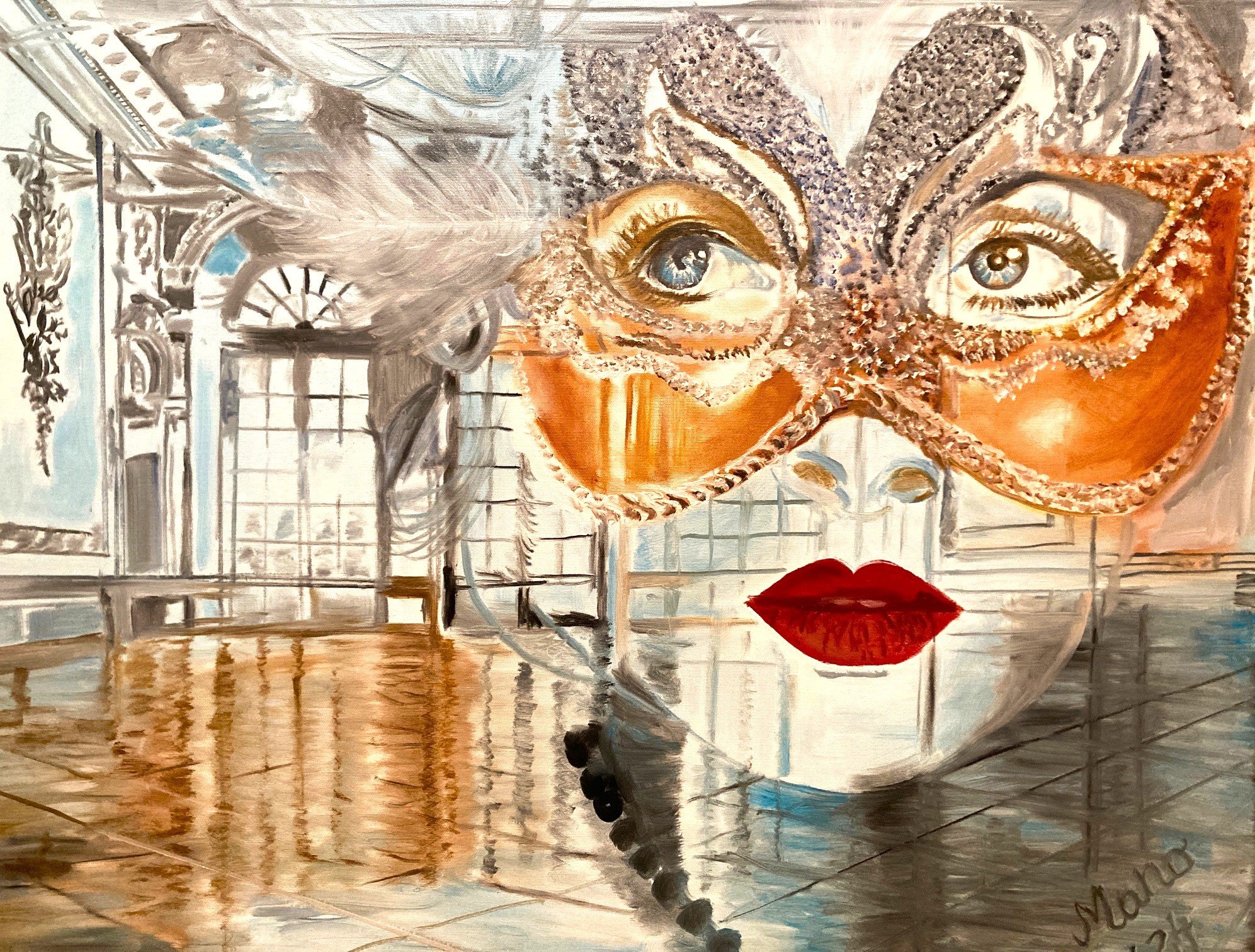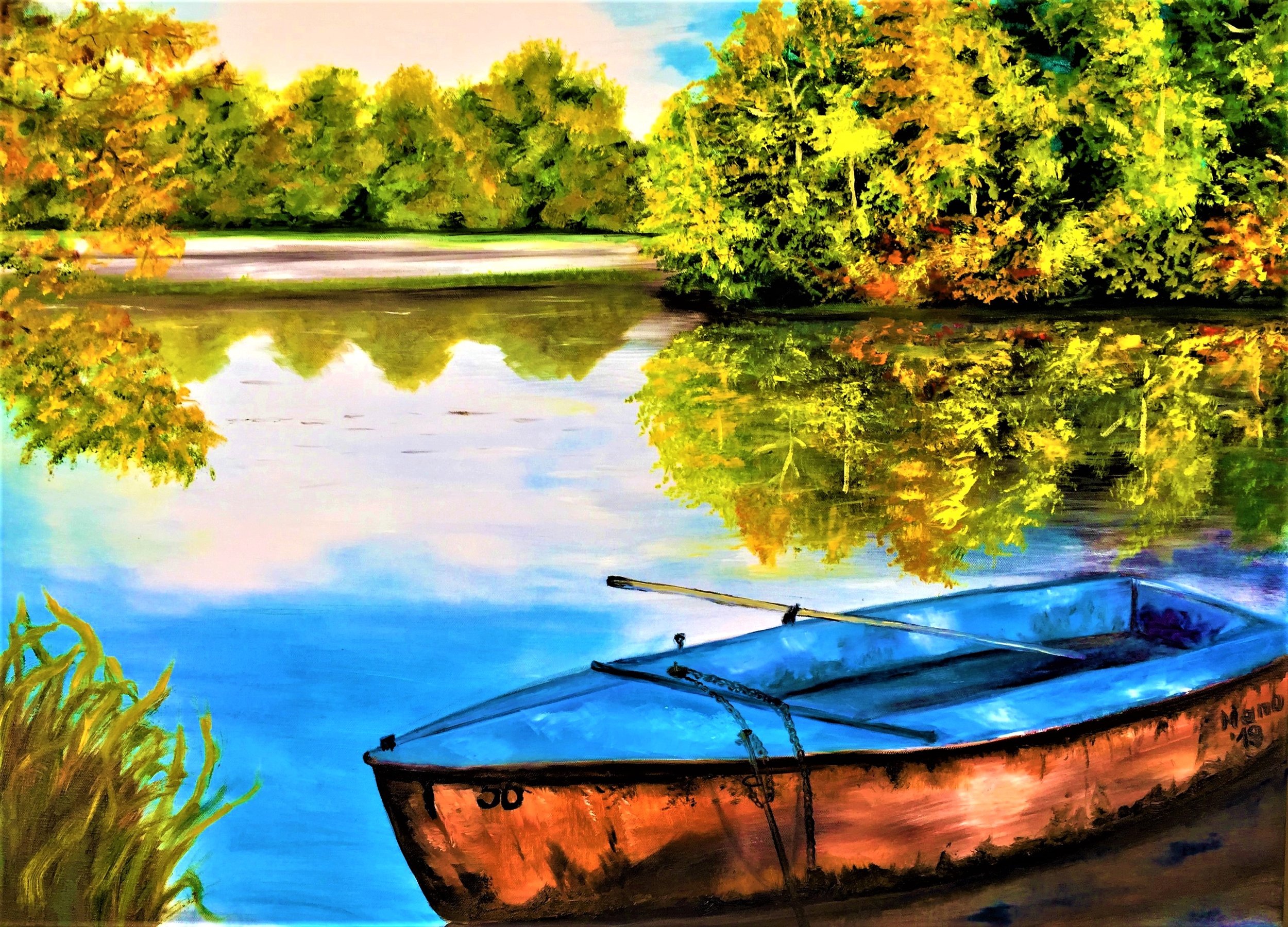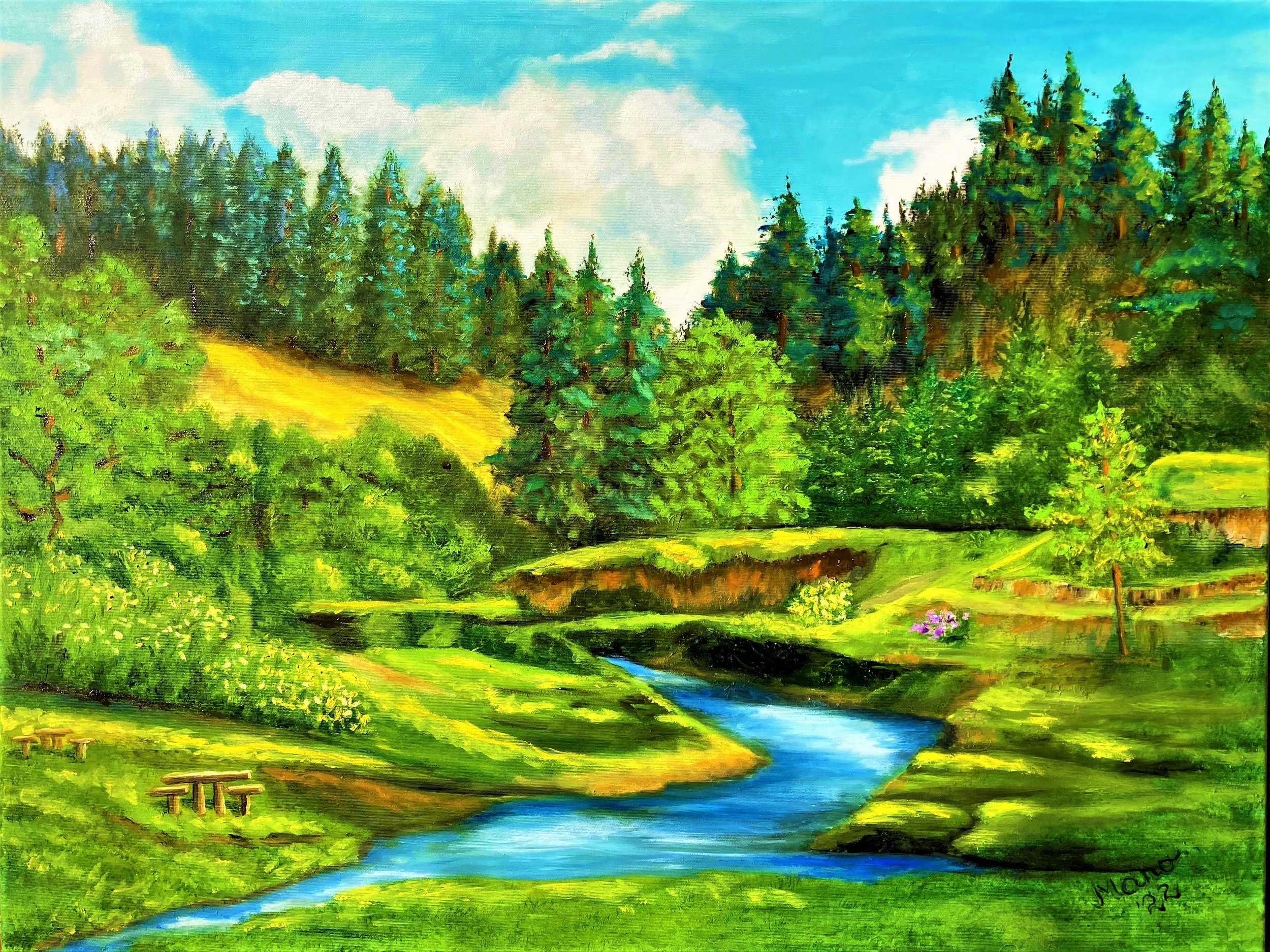Interview with Nora Komoroczki
Nora KOMOROCZKI – Artist name: MANO
Nora is a Hungarian artist-painter with the artist name Mano. She was born in Hungary and is still living in the Hungarian capital, Budapest. She’s been painting with oil on canvas for more than three decades, inspired first by the beautiful landscapes in Hungary and other countries where she has been living with her family for a few years (Sweden, Israel, Belgium). Her qualification is journalist, but she has visited some artistic courses both in Stockholm and Budapest. First, as the Editor in Chief of Hungarian Airlines she could travel a lot, and later as the Regional Director of the Scandinavian and Baltic Countries at the Hungarian Tourism Agency she could see and meet interesting people, and capture the beauty of different countries. She tried to show this beauty and special moments on her canvas. Her artworks were invited to different art exhibitions - solo and in group - organized in Hungary, Sweden, Austria, Israel, Belgium, the USA, France, the United Kingdom, Spain, and Italy. She is an artist awarded several international art prizes (Leonardo da Vinci, Caravaggio, Michelangelo, Picasso, Palma d’Oro, Art Olympic Prize, Artist of the Future, Face of Peace Art Prize, Artist of Creativy, Top 60 Masters, Trophy International Prize Paris, The best Modern and Contemporary Artists London, World Best Artist Prize, etc.)
You have lived and painted in various countries, including Hungary, Sweden, Israel, and Belgium, each with its own unique culture and environment. How has the experience of immersing yourself in these diverse settings influenced your artistic style and the subjects you choose to depict in your paintings? Can you share specific examples of how a particular place has shaped a specific artwork or series?
I’m a Hungarian artist, loving and admiring my own home country. Hungary, with its rich history and vibrant arts scene, which provided a foundation for my early development as an artist. The classical architecture of the capital city, Budapest and the colourful landscapes of the countryside influenced my art. We have hills, castles, churches, lakes, rivers, a wonderful Great Plain, which is unique in whole Europe. The „Hungarian sea” lake Balaton, the wonderful Buda castle, the Lake of nearby Fót or the Szalajka Valley have all truly inspired me in recent times, just to mention a few.
Living abroad for a while and our trips undertaken to different countries also influenced my art. Of course, each country has contributed a unique layer to my artistic voice, influencing my style, techniques and subject matter. The experiences and impressions from these diverse settings continue to inspire my art work, enabling me to create my art that resonates with a sense of place and cultural depth.
With a background in journalism and a career as an artist, how do you perceive the role of art in conveying deeper truths about the human condition and the world around us? Do you see parallels between journalism and art in terms of their capacity to reflect and influence society? How do you integrate these perspectives into your creative process?
I think journalism is about uncovering and communicating facts, providing a lens through which we can understand events and issues. Art also seeks to reveal truths—emotional, psychological, or societal—that might not be as easily articulated through words alone. By integrating my journalistic perspective into my artistic practice, I strive to create work that is not only visually engaging but sometimes thought-provoking and socially relevant. Both journalism and art, in their own ways, contribute to a deeper understanding of the human condition and the world we live in. Through my art, my intention is to bridge over these disciplines. I also strive to capture the beauty of the world around us in my paintings.
Your artist statement highlights the importance of preserving the natural world for future generations. How do you believe that art, particularly your paintings, can contribute to environmental conservation and awareness? Can you discuss any specific works where you aimed to raise awareness about environmental issues?
In my view art can evoke strong emotional responses, creating a connection between the viewer and the subject. By portraying the beauty and intricacies of natural landscapes and wildlife, art can foster a sense of appreciation and responsibility towards the environment. It’s terrible, that a large amount of plastic good used by us, people still covers the rivers and seas or water areas of several countries as garbage. I really like to paint the special colors of the water of lakes, seas and rivers, the trees, plants or ships reflected in them. I try to emphasize their beauty through their purity, and with this I also want to convey that this is how we must preserve and protect our life-giving waters.
Your work often features beautiful landscapes, capturing the essence of various places you’ve experienced. How do you convey the emotional and philosophical significance of these landscapes in your paintings? What techniques do you use to evoke specific feelings or thoughts in the viewer when they engage with your work?
Color is one of the most powerful tools for evoking emotions. I carefully observe the play of light and shadow in the landscape and choose the color palette, accordingly in order to reflect the mood I want to convey. By combining careful observations and technical skills, I strive to convey the emotional and philosophical significance of landscapes in my pictures. Using special techniques of color, brushwork, composition and light, I aim to create specific feelings and wake thoughts in the viewer, allowing them to deeply connect with the natural world.
You have received numerous prestigious international art awards, including the Leonardo da Vinci and Caravaggio prizes. How do these accolades influence your artistic journey and your perception of your work's impact on the art world and society at large? Do they change how you approach your craft or the themes you explore?
I’m very proud of all of my international and Hungarian art awards. These awards give me a sense of validation and recognition from the art community. They affirm the quality and significance of my work, which is really encouraging and motivating. This recognition helps me to build my confidence and reinforces my commitment in pursuing my artistic vision. They push me to strive for excellence, refine my techniques, and expand my creative boundaries. The recognition serves as a benchmark, reminding me to maintain high standards in my work.
Over the course of more than three decades of painting, how has your artistic philosophy and style evolved? Can you identify key experiences, insights, or turning points that have significantly shaped your creative process? How do you balance staying true to your artistic vision while also embracing change and growth?
Living and painting in various countries —Hungary, Sweden, Israel, and Belgium—have been instrumental in shaping my artistic perspective. Each culture's unique landscapes, traditions, and philosophies have influenced my work, enriching it with a global sensibility. The balance between my artistic vision and my willingness to change has allowed me to create dynamically developing work that is true to myself. This ensures that my work is relevant and has a sincere effect on the viewer.
Your training and experience as a journalist have undoubtedly informed your approach to painting. How has your background in journalism influenced the way you observe and portray human subjects and natural scenes in your art? Do you find that journalistic principles of storytelling and investigation manifest in your paintings?
I believe that both journalism and art require very good observation and thoroughness. You have to focus on even the smallest details, as they are of great importance. The principles of storytelling, investigation and empathy from journalism have been integrated into my creative process, I create my paintings that not only capture the visual beauty of the given subjects, but also tell meaningful stories that resonate with viewers on multiple levels.
As a Hungarian artist exhibiting internationally, how do you navigate the relationship between your national identity and your work? How do you balance incorporating elements of your Hungarian heritage with universal themes that resonate with a global audience? Can you provide examples of how your cultural background has shaped specific pieces?
In addition to the fact that Hungarian history, Hungarian culture, and our traditions are decisive for me in reality, of course, I also try to focus on universal topics that can connect with a wide audience. Topics such as nature, human emotions, historical injustice, social problems or environmental protection are universally relevant and resonate with people living in different cultures.
Your work often captures special moments of beauty in both people and nature. How do you approach the philosophical concept of impermanence in your art, and what message do you hope to convey about the fleeting nature of beauty? How do you reconcile the desire to capture and preserve these moments with the understanding of their transient nature?
Impermanence encourages a mindful approach to observation. When I paint, I strive to capture the transient details and ephemeral qualities of my subjects, whether it's the changing light in a landscape, the delicate bloom of a flower, or a fleeting expression on a person's face. This mindfulness enables me to appreciate and depict the beauty of the moment fully.
Considering your emphasis on preserving nature and your extensive involvement in the international art scene, what legacy do you hope to leave for future generations of artists? How do you envision the role of artists evolving in addressing global challenges such as environmental degradation, social justice, and cultural preservation? What advice would you give to emerging artists who are inspired by your work and mission?
I hope to inspire young artists to use their talents as a force for positive changes. By consistently highlighting the beauty and fragility of the natural world in my paintings, I aspire to cultivate a deep appreciation for nature in both artists and audiences. I want future generations to see the importance of preserving the environment and to feel a sense of responsibility towards protecting our beloved planet.
https://artnow0.webnode.com/
















